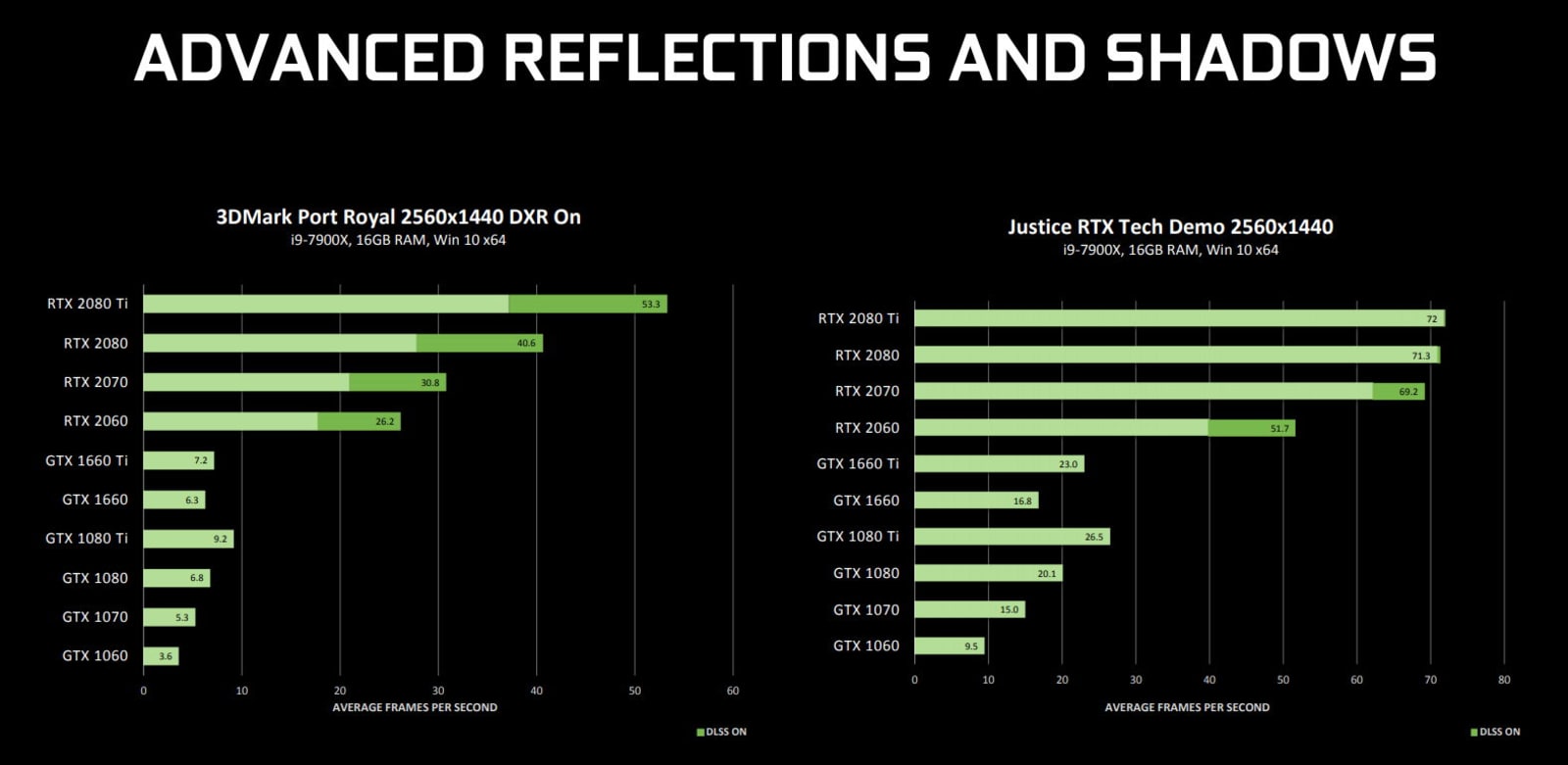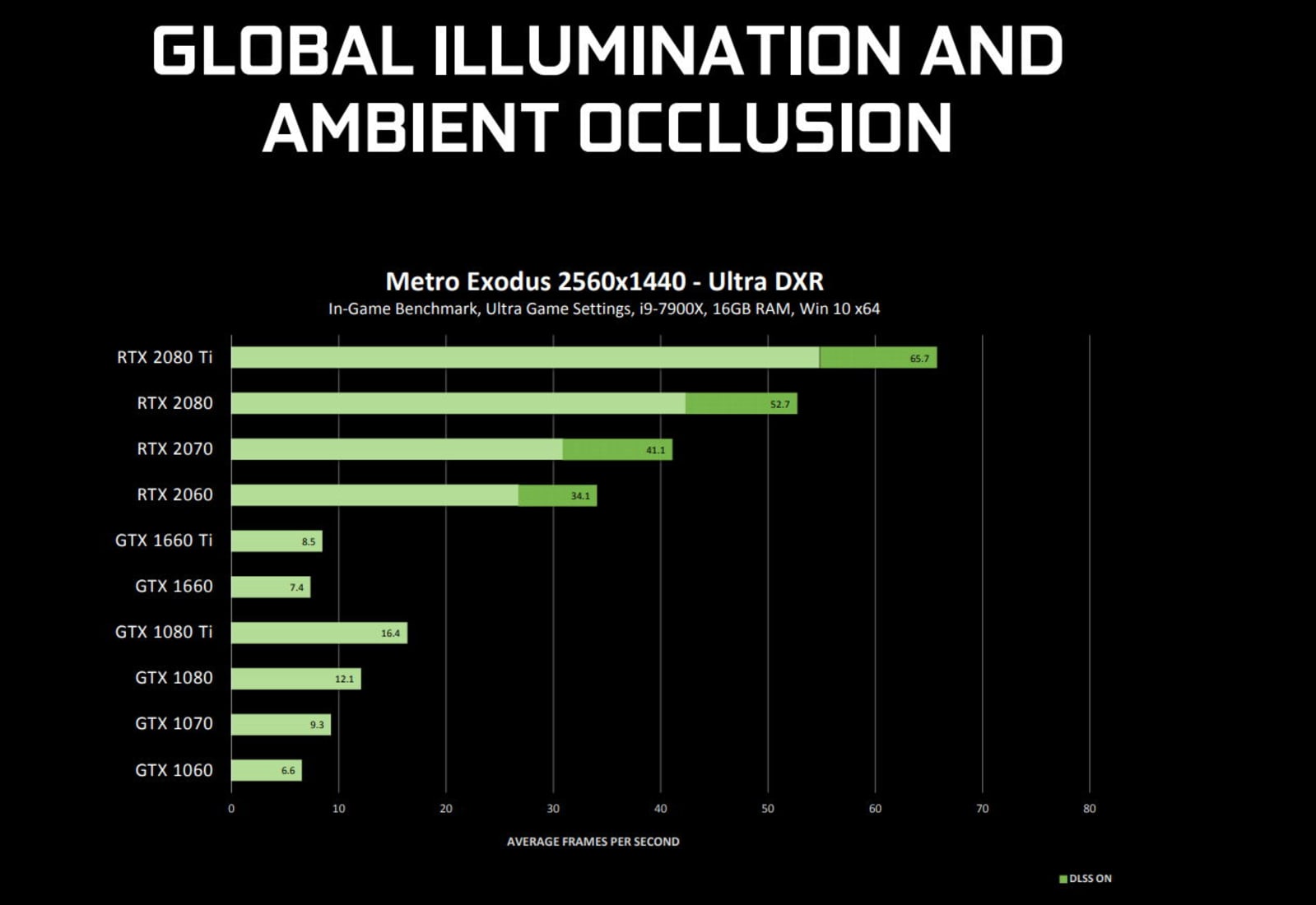NVIDIA shows how much raytracing sucks on older GPUs Engadget
 NVIDIA
NVIDIA NVIDIA currently introduced that ray-tracing is coming to older Pascal GPUs, and now it has targeted how properly -- or not properly, rather -- it'll truely work. If you are glad with primary consequences, the information isn't too terrible. The RTX 2080 Ti will outperform its 1080 Ti counterpart by just over double for reflections, in keeping with what you would count on for a next-gen card. However, for stuff that actually provides realism, like superior shadows, worldwide illumination and ambient occlusion, the RTX 2080 Ti outperforms the 1080 Ti with the aid of up to a issue of six.
To cite a few unique examples, Port Royal will run on the RTX 2080 Ti at 53.3 fps at 2,560 x 1,440 with superior reflections and shadows, at the side of DLSS anti-aliasing, became on. The GTX 1080, however, will run at simply 9.2 fps with the ones functions enabled and might not come up with any DLSS in any respect. That correctly makes the feature useless on those playing cards for that recreation. With fundamental reflections on Battlefield V, however, you may see 30 fps at the 1080 Ti in comparison to 68.3 on the 2080 Ti.
Meanwhile, if you want ambient occlusion, which delivers diffused shadow and lighting effects, you'll be able to run that at 59.5 fps on the RTX 2080 Ti (on an RTX tech demo), 47.6 fps at the RTX 2080, 33.7 fps on the RTX 2070 and 31.1 fps on the RTX 2060. Meanwhile, the GTX 1080 Ti will best hit an unusable 9.4 fps, or 6.8 fps, 5.2 fps, and three.5 fps on the GTX 1080, 1070 and 1060 respectively. Other realism-oriented capabilities, like international illumination, characteristic similar performance drops at the older Pascal playing cards.
What this means is that despite NVIDIA's promise to offer ray-tracing on Pascal, the features are largely unworkable for real-life gaming. This isn't terribly surprising, the newer RTX cards feature banks of chips dedicated solely to boosting RTX and DLSS anti-aliasing. Also,NVIDIA already said that performance would be poor, but now can see exactly how much they accelerate those effects compared to the older cards.
So what good will the feature do you then? Well, you can always try out your favorite game and turn ray-tracing on and off to see whether you think it's worth using. That's certainly better than not having the effect at all. Mostly, it appears as ifNVIDIA wanted to tamp down expectations before the features are released in the wild -- and looking at the numbers, it has succeeded in that.
Let's block commercials! (Why?)
//www.engadget.com/2019/04/11/nvidia-shows-how-lots-ray-tracing-sucks-on-older-gpus/
2019-04-11 13:00:57Z
52780266494158


0 Response to "NVIDIA shows how much raytracing sucks on older GPUs Engadget"
Post a Comment